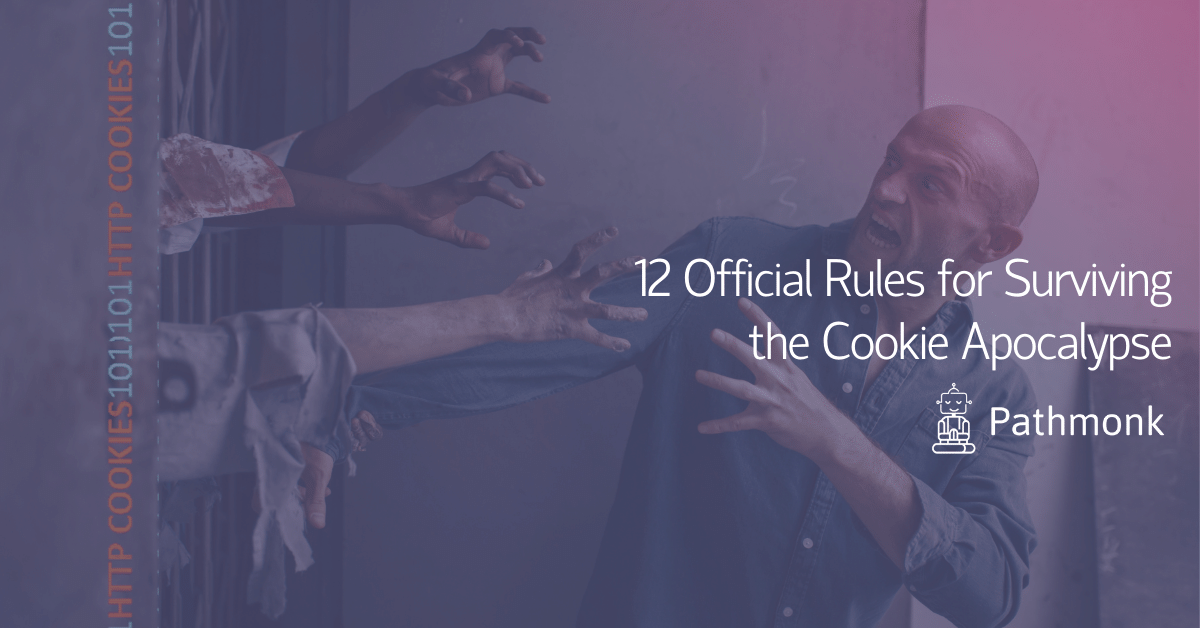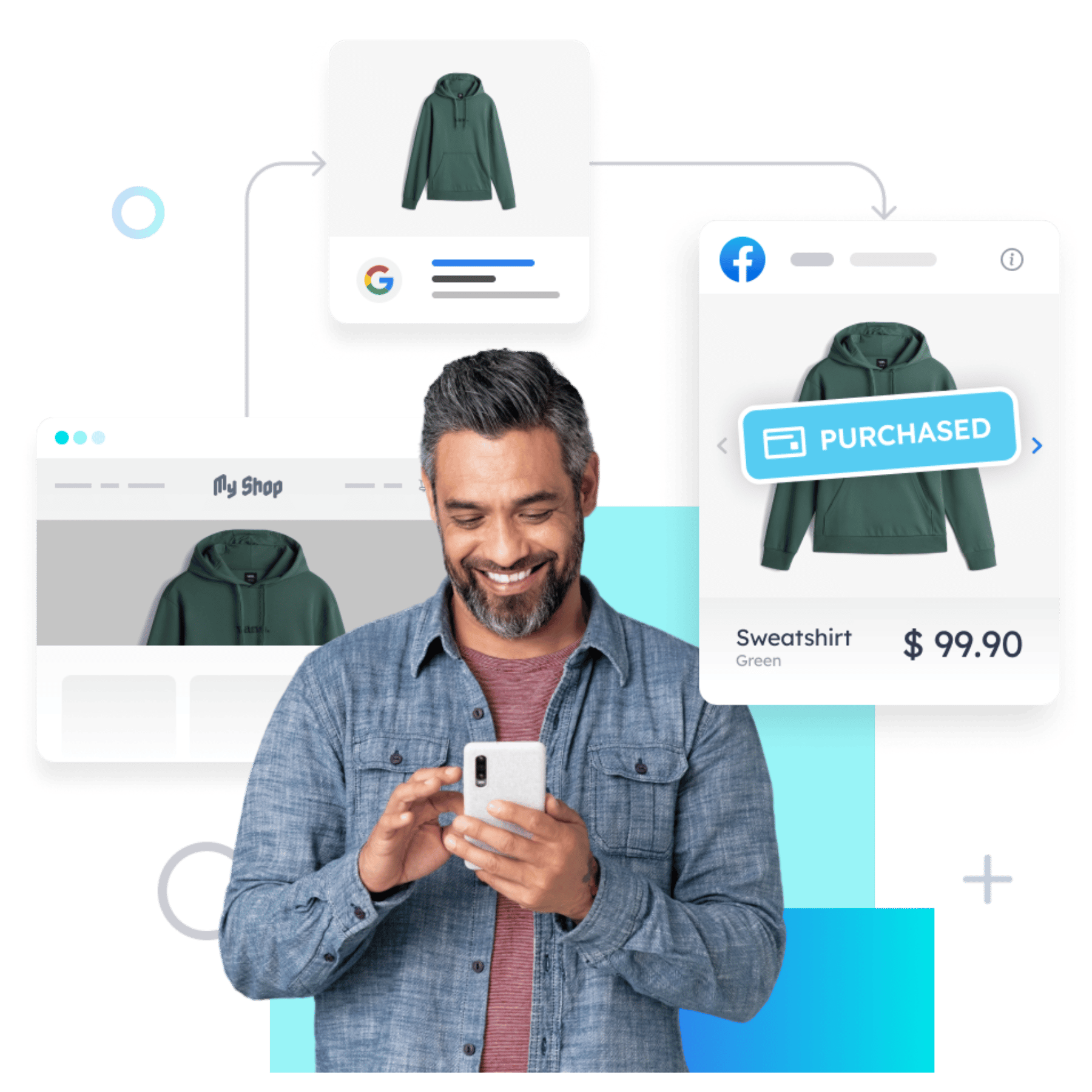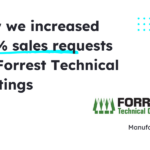
Third-party cookies are like zombies; annoying, hungry for the wrong things, endlessly following us around when we’re not interested in their attention, and simply destructive. They’re destroying the relationships we have with our customers, and prospects. We’ve relied on them for so long that we’ve almost forgotten how to personalize, enhance user experiences, and retarget without them. We’ve forgotten how to give our users authentic, valuable, and personable experiences.
So we should be happy to hear of their demise and the impending approach of the cookie apocalypse. And, yet, 67% of marketers feel disappointed, frustrated, overwhelmed, helpless, and even confused as third-party cookies come to an end.
The ‘cookie apocalypse’ seems like a somewhat dramatic statement but 80% of marketers are very or moderately reliant on third-party cookies for their digital advertising efforts. They have serious concerns about the future of marketing and advertising. So we thought we’d sweep in guns blazing; armored with tips, insights, and actions. Giving you the perfect list of rules for undeniable survival; your personal survival kit to get you through any digital cookie apocalypse.
Official Rules for Surviving the Cookie Apocalypse
Rule #1: Detect And Define All The Places You Use Cookies
You want to be aware of enemy locations in order to effectively beat them. So maybe it’s been a while, maybe you just have no idea. But, now would be an excellent time to audit your website and see exactly which cookies are in your domain and how to control them. Consider how much value they have. Are they third-party cookies or first-party cookies and how much data are you collecting and using from these cookies?
2.5x better ad results with cookieless retargeting
Create high-converting retargeting ads based on your users' real-time intent.

Rule #2: Ensure Cookie Compliance & Deliver Transparency
Once you’ve got a bigger picture of which cookies you use and where they are used you need to ensure you are compliant and transparent with your consumers and prospects. This is not the end of consent. Regardless of the technology and strategies you use, you will still need to ask for and obtain explicit consent from your users. You will still need a cookie banner if you are collecting first-party cookies.
By the way, Pathmonk Intelligence provides privacy-friendly analytics. No cookies and fully compliant with GDPR. It is built for privacy-conscious website owners.
Rule #3: Update Privacy Policy
By respecting data privacy laws and looking after your customer’s data the more trustworthy your brand will seem. Be honest with how their data is collected and used and ensure it is for the benefit of their user experience. As with any battle or challenge you want to trust the people around you. You have to acknowledge if there are any third or second parties used to collect the information or are privy to the information. By not relying on third or second parties to collect data and by keeping that data private you can create a strong data privacy policy that will add significant value to your brand and contribute to building brand trust and success.

Rule #4: Improve Data Security
Feeling secure and safe in any apocalypse is a great privilege. So as consumers’ concerns are validated by the constant data breaches, leaks, and invasions, it’s time to invest in and improve your data security. The more effort you put into protecting that data the more value you give your customers.
Rule #5: Give Customers More Control & Choice
We still need consent but we can do it better and give our customers more control and choice. Stop hiding behind one-liners and deliver more customizable and dynamic experiences. Allow them to choose based on location, personalization, segmentation, and targeted campaigns. You give them the power and they in turn trust you more and understand where their data is used. A great team will be formed for undeniable survival.
Rule #6: Check That You're Using the Right First-Party Data Strategy
A study by Google and BCG concluded that “Those using first-party data for key marketing functions achieved up to a 2.9X revenue uplift and a 1.5X increase in cost savings. Despite its clear benefits, however, most brands aren’t yet harnessing first-party data’s full potential.”
First-party data has been seen as the savior in this cookie apocalypse but it will only be truly effective if you do it right. In a zombie apocalypse what would serve you best – an impenetrable vehicle or a soft-top convertible?
Many of us will still rely on first-party cookies to support this data collection and others turn to practical but sometimes unrealistic or unachievable data analysis and collection. Although first-party cookies are here to stay, nothing is certain in an apocalypse. As data privacy concerns grow and browsers change rules and regulations it’s time to adapt, refine, and rethink our first-party data strategies; to create bullet-proof, future-proof strategies. So how can we collect effective first-party data that doesn’t rely on cookies? To find out more check out our detailed guide on web data cookieless strategies

Rule #7: Consider How You’re Analyzing Your Data
We have to collect data differently but collecting that data requires analysis and expertise that we don’t all have the privilege to. One of the best ways to analyze and extract value from that data is through Pathmonk Intelligence. Forget about Google Analytics and complex analysis that requires resources and expertise, simply start taking advantage of the power of Artificial Intelligence.
In any apocalypse time is limited. We have to act quickly and decisively. So don’t waste time. We don’t all have the expertise and time to analyze data effectively and we don’t all have the budget to support analytics. But, no matter who you are, we all become equals in an apocalypse and should therefore all have the privilege of data and analytics so we can better understand our users and ultimately offer improved buying experiences. So tools like Pathmonk Intelligence give you that power; simply, effectively, and affordably.
Rule #8: Create CTAs & Content That Match Your Buying Journey
By acknowledging the buyer journey stage we can tailor content and experiences in order to influence our prospects toward a final purchase. An apocalypse is demanding and challenging, but with hard work, rules, and technology it can be easier to face. A prospect who has only just become aware of your solution is not ready to experience a demo, so why disrupt their buying journey with inappropriate pop-ups? Match that stage with content such as guides, ebooks, and articles that will serve them as they become more aware of your offerings.
Rule #9: Update & Create Powerful Content
Reading great stories is a great way to pass time and entertainment is definitely something we’ll all need as we face the approaching apocalypse. So let’s entertain our prospects. Businesses that blog get 67% more leads per month. Get back to the route of marketing; serving valuable content and experiences. Rather than hyper-focusing on retargeting prospects serve quality content that reaches them in a more valuable and useful way. Analyze, update, distribute, and create powerful content to avoid missed opportunities and conversions so you are no longer solely reliant on retargeting and third-party cookies.

Rule #10: Eye-Catching and Creative Messaging
Alongside content comes messaging. We want to reduce friction and ensure we answer all possible questions. Re-evaluating the success of your messaging and working to see what works and doesn’t, could increase your customer retention rate. Attention spans are short so capturing that attention creatively and effectively could improve the lifespan of your user’s online experience. Helping them navigate quickly and seamlessly through their buying journey will leave you with fewer customers to retarget.
Rule #11: Consider Real-Time Personalization and Tools
We’re creating valuable content that matches buying journey stages and we’ve coupled that with capturing messaging. We’re collecting more powerful data based on those stages and we’re even analyzing it effectively, but how are we using it? If your users consent to the collection of their data they expect personalized and high-quality experiences.
So far it has been impossible to influence our buyers in real time. But we’re changing that. Through a buying journey analysis and the power of AI, Pathmonk Results can predict the most likely next step of your visitor. You can serve interactive micro-experiences that match the user’s buying journey stage. You’ll finally be able to directly influence users in key-decision moments. Plus you can find out which ad campaign brought a visitor to your site and serve content that matches that ad, so you can increase conversions and cut acquisition costs in half.
This plug-and-play and intuitive cookieless solution requires no changes to your website. You choose the CTAs and watch your users be influenced in key-decision moments.
Rule #12: Consider New Tools For Ad Retargeting
So you’ve defined and leveraged a first-party data strategy based on buying journey stages, and you’re analyzing it in a way that offers actionable change suggestions, in a way that you understand. You’re using that data to personalize experiences in key-decision moments and in real-time. You’re creating powerful content and CTAs for all buying journey stages and you’ve found creative ways of delivering your messaging. You’ll start to see increased conversions and happier customers.
However, we can’t deny that prospects will still leave without converting. So we may need to add another weapon to our arsenal in this cookie apocalypse. How can we effectively retarget without third-party cookies? Pathmonk Retargeting is an entirely cookieless solution. Boost your ROI with a retargeting strategy based on user personas and buying journey stages. Processing different kinds of data, and collecting real-time user data such as search history, customer preferences, etc. allows our technology to analyze users’ behavior, find patterns, and personalize ad recommendations to target users with real buying intent. A solution that adheres to privacy laws and creates effective ad campaigns that actually serve your prospect.
Conclusion
Naturally, we should be afraid of any apocalypse but we hope we have reframed that fear for any marketers out there. The cookie apocalypse should be seen as less threatening than zombies running for you with only one goal; brains and more of an opportunity to review our marketing efforts and ensure that we’re serving our customers and prospects. Retargeted Ads can no longer be relied on, collecting data that has not been explicitly and conscientiously given to you by users cannot be leveraged, cookie regulations and lifespans are forever changing and evolving; these can no longer be a crutch for personalization and heightened user experiences.
We hope with our rules you’ll be well-equipped, informed, and ready for battle. We must create and improve data retention, management, and strategies so we never have to rely on cookies again. To strike the perfect balance between data privacy and data-driven business.
2.5x better ad results with cookieless retargeting
Create high-converting retargeting ads based on your users' real-time intent.









